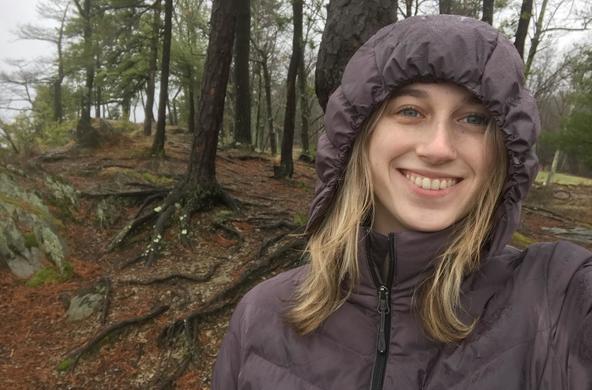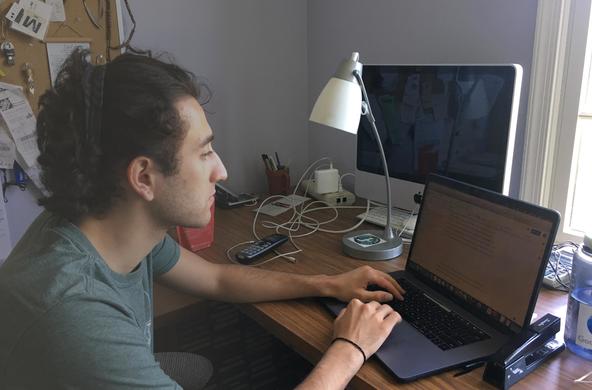This summer, I am investigating competitive dynamics among scavenger guilds at Cary Institute. Carrion (dead animal flesh) is an essential yet limited food source for microbes, invertebrates, and vertebrates. My research focuses on how invertebrate and vertebrate scavengers impact each other’s scavenging success.
We want to know if carrion consumption rates differ between an exposed carcass, which is available to both vertebrates and invertebrates, and a carcass in an exclosure, which is protected from vertebrates. We also seek to determine whether invertebrates, such as flies and beetles, attract vertebrates, such as foxes and vultures, to a carcass.
The invertebrates we have seen so far are predominantly beetles, flies, and their larvae. Our camera traps have ‘caught’ bears, raccoons, opossums, and vultures.

To answer these questions, we have selected four sites on Cary Institute’s property in Millbrook, NY to conduct our experiment. Two chicken carcasses are placed at each site; one is attached to a tree with a galvanized wire and exposed to all scavengers, while the other chicken is placed in a wire mesh exclosure to prevent vertebrate scavenging. We leave the carcasses out for one week and weigh them at the beginning, middle, and end of each week to calculate consumption rates of each chicken. We are conducting four week-long cycles this summer.
Two camera traps are placed at each site, facing the chicken carcasses. These cameras are motion-sensitive and ‘capture’ images of animals when they walk into the camera’s field of view. This helps us identify which vertebrate scavengers visit our sites. The cameras can also tell us approximately what time each vertebrate discovered the carcass, so we can estimate time of detection.
We quantify invertebrates by shaking the dead chicken carcasses over a tray so they fall off the carcass and can be counted. This helps us estimate their abundance and collect samples for identification. Since not all of the invertebrates detach from the carcass, we also take pictures of the chicken; we place a ruler on the chicken’s breast bone to serve as a scaling tool. Later, we can use the pictures to estimate invertebrate numbers.

We would also like to better understand the current invertebrate scavenger community on Cary Institute grounds. This has never been studied, so our research serves as a preliminary survey of carrion-eating invertebrates on the Cary property.
After collecting insect specimens from the chicken carcasses, we either preserve the insects in a freezer or place them in ethanol, depending on whether they are hard or soft-bodied. Then, I take them back to the lab for identification. This is the most exciting part of my research for me because I want to attend graduate school for entomology, which is the study of insects. I use a dissecting microscope and identification books and keys to help me classify the insects.

Some invertebrates are too challenging to identify as larvae or immature juveniles, so we rear them to adulthood. This involves feeding maggots chunks of chicken and transferring them to larger jars after they pupate. After they hatch as adult flies, we put them in a freezer to identify later.
I am really looking forward to where my project will go from here. I think as we collect more data, it will become more and more interesting. At the moment, we are looking for better insect identification keys and seeking help from professional entomologists so we can better identify and study the invertebrate scavengers. I am very excited to see what we find and I can’t wait to see what vertebrates are visiting our sites.
Maggie Flowers, a student at Simpson College, is part of Cary Institute's 2019 Research Experiences for Undergraduates (REU) program.
This summer, Maggie is working with Cary’s Joshua Ginsberg and Mike Fargione, with collaborators José Anadón and Alexis Brewer from Queens College in the City University of New York (CUNY), to study scavenging behavior on Cary Institute’s campus.





